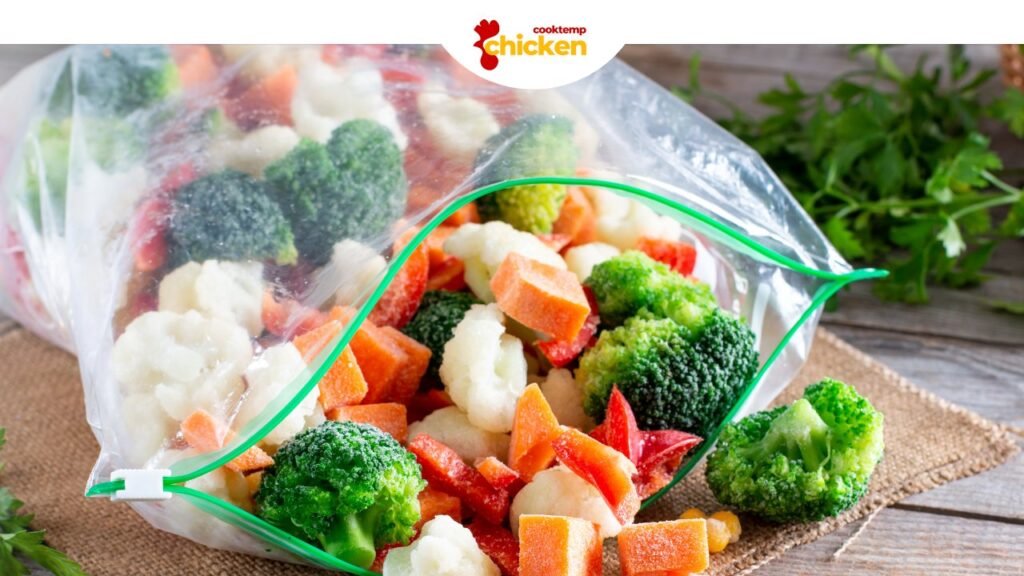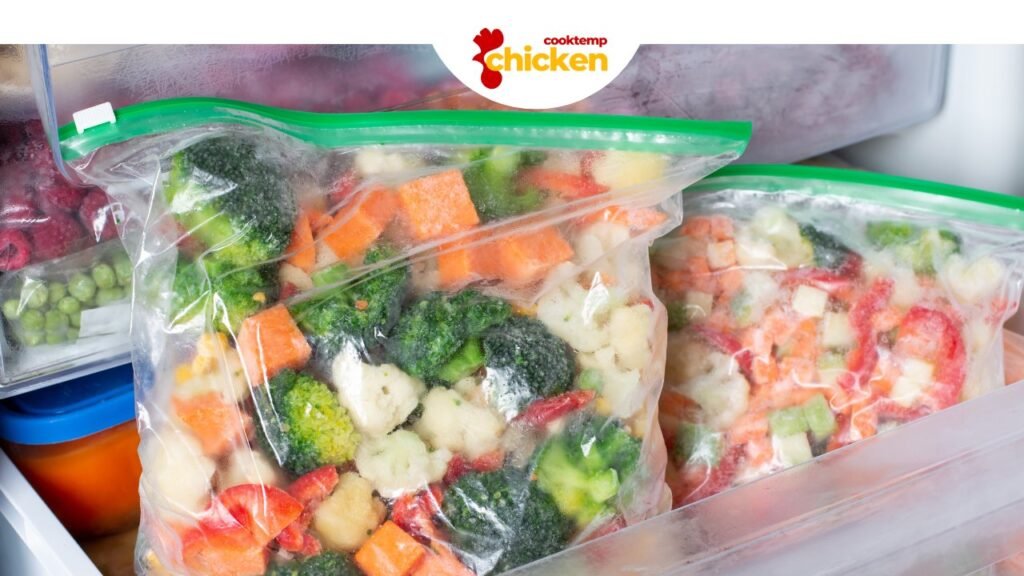Picture this: You’ve just returned from a grocery haul, your freezer is bursting with fresh produce, meats, and all sorts of goodies. But wait—a sudden freezer malfunction leaves you without a way to keep your food frozen. Panic sets in, right? Not necessarily! There are numerous ingenious ways to how to keep food frozen without a freezer that can save your groceries and your sanity. Whether you’re dealing with a temporary outage, living off the grid, or simply looking to reduce energy consumption, this guide has got you covered.
Why You Might Need Alternatives to a Freezer
Unexpected Freezer Breakdowns
Freezers can fail without warning, leaving you scrambling to preserve your food. Understanding how to keep food frozen without a freezer can be a lifesaver in these situations.
Power Outages
Severe weather or infrastructure issues can lead to extended power outages. Knowing alternative methods ensures your food stays safe until power is restored.
Off-Grid Living
For those embracing a minimalist or off-grid lifestyle, relying solely on a freezer might not be feasible. Alternative methods offer sustainable ways to keep food frozen.
Reducing Energy Consumption
Even if you have a functioning freezer, exploring other methods can help reduce your energy footprint and save on utility bills.
The Science Behind Freezing Food

Before diving into alternative methods, let’s quickly touch on why freezing is so effective. Freezing slows down enzyme activity and bacterial growth, effectively preserving food for longer periods. The key to how to keep food frozen without a freezer lies in replicating these conditions as closely as possible.
Top Methods to Keep Food Frozen Without a Freezer
1. Coolers with Ice Packs
One of the simplest and most accessible methods is using a high-quality cooler combined with ice packs or ice blocks.
How It Works
- Insulation: A good cooler provides the necessary insulation to keep cold temperatures in.
- Ice Packs: These help maintain a low temperature, keeping your food frozen longer.
Tips for Success
- Pre-Chill Your Cooler: Before placing your food inside, chill the cooler with ice or cold water to maximize its cooling efficiency.
- Use Block Ice: Block ice melts slower than ice cubes, providing longer-lasting cold.
- Keep It Closed: Minimize opening the cooler to retain the cold air inside.
Example Setup
| Item | Quantity | Purpose |
|---|---|---|
| High-Quality Cooler | 1 | Insulation |
| Block Ice Packs | 4-6 | Long-lasting cold |
| Frozen Food Items | As needed | To be kept frozen |
2. Dry Ice
Dry ice, the solid form of carbon dioxide, is incredibly effective for keeping food frozen without electricity.
Benefits
- Extremely Cold: Dry ice can keep food frozen for days.
- No Melting: It sublimates directly into gas, leaving no liquid residue.
Safety Precautions
- Handle with Care: Use gloves to avoid frostbite.
- Ventilation: Ensure good ventilation to prevent gas buildup.
- Storage: Place dry ice in insulated containers designed for its use.
3. Evaporative Cooling (Zeer Pots)
For a more sustainable and low-tech approach, evaporative cooling using zeer pots (clay pot coolers) can keep food cool in hot climates.
How It Works
- Double Pots: Place a smaller clay pot inside a larger one, filling the space with wet sand.
- Evaporation: As the water in the sand evaporates, it cools the inner pot.
Limitations
- Climate Dependent: Best suited for dry, hot environments.
- Limited Cooling: Not as effective as mechanical refrigeration but can help in mild conditions.
4. Insulated Bags and Reflective Materials

Using insulated bags combined with reflective materials can enhance the cooling effect of any ice or cold source you have.
Setup
- Insulated Bags: Keep your food items in high-quality insulated bags.
- Reflective Materials: Wrap the bags in reflective blankets or foil to deflect heat.
Benefits
- Portability: Easy to transport your frozen items.
- Enhanced Insulation: Reflective materials help maintain low temperatures longer.
5. Underground Storage
Burying food containers underground can utilize the earth’s natural coolness to keep your food frozen.
How It Works
- Depth: Dig a hole deep enough to reach cooler soil layers, typically 3-4 feet.
- Containers: Use airtight, waterproof containers to protect your food from moisture and pests.
Considerations
- Location: Ensure you’re in an area with consistently cool soil temperatures.
- Access: Make sure you can easily access your buried containers when needed.
Combining Methods for Maximum Effect
Why settle for one method when you can combine several for better results? For instance, using a cooler with ice packs inside an insulated bag wrapped in reflective material can significantly extend the time your food stays frozen. Here’s a table illustrating a combined setup:
| Method | Implementation | Benefits |
|---|---|---|
| Coolers with Ice Packs | Place frozen food and ice packs in a high-quality cooler | Insulation and prolonged cooling |
| Insulated Bags | Place the cooler inside an insulated bag | Enhanced insulation and portability |
| Reflective Materials | Wrap the insulated bag in a reflective blanket | Additional heat reflection and retention |
Creative Alternatives and DIY Solutions
1. Ice Water Baths
Create an ice water bath by surrounding your food containers with ice and water. The water conducts cold more effectively than ice alone, keeping your food frozen longer.
How to Set Up
- Containers: Use watertight containers for your frozen food.
- Ice and Water: Fill a larger container with ice and water, then submerge the food containers.
Advantages
- Efficient Cooling: Water conducts cold better than air.
- Reusable: Easily replenish ice as needed.
2. Insulated Window Panels
If you have access to a shaded or cool area, using insulated window panels can help maintain low temperatures around your stored food.
Steps
- Panels: Install insulated panels or thermal curtains around your storage area.
- Shade: Position your storage near a shaded window to reduce heat gain.
Benefits
- Passive Cooling: Utilizes natural shading to keep temperatures down.
- Cost-Effective: Minimal setup costs with reusable materials.
Choosing the Right Method for Your Needs
Not all methods are created equal, and the best approach depends on your specific situation. Here’s a comparison table to help you decide:
| Method | Best For | Pros | Cons |
|---|---|---|---|
| Coolers with Ice Packs | Short-term outages, portability | Easy to use, widely available | Limited duration without replenishing ice |
| Dry Ice | Long-term storage, emergencies | Extremely cold, no melting | Safety precautions, limited availability |
| Evaporative Cooling | Sustainable living, hot climates | Low energy, eco-friendly | Climate dependent, less effective |
| Insulated Bags | Portability, enhancing other methods | Lightweight, easy to use | Requires additional cold sources |
| Underground Storage | Permanent solutions, rural areas | Natural cooling, long-term storage | Labor-intensive, limited access |
| Ice Water Baths | Efficient short-term cooling | Effective heat conduction, reusable | Requires constant ice replenishment |
| Insulated Window Panels | Passive cooling, supplemental storage | Low cost, easy to set up | Limited cooling capacity |
Personal Tips and Preferences
From my experience, combining a few methods yields the best results. For example, using a cooler with block ice, placed inside an insulated bag and wrapped in a reflective blanket, can keep your food frozen for up to 48 hours. It’s all about layering your approach to maximize cooling efficiency. Have you tried any of these methods? Share your experiences!
Frequently Asked Questions (FAQs)
1. How long can food stay frozen without a freezer?
The duration depends on the method used. With a high-quality cooler and plenty of ice, food can stay frozen for 1-2 days. Using dry ice can extend this period to several days, while underground storage might keep food frozen for weeks in the right conditions.
2. Is it safe to eat food that has partially thawed and refrozen?
Generally, it’s not recommended. Partially thawed food can develop bacteria that multiply quickly. If the food has thawed completely and then refrozen, it’s best to discard it to avoid foodborne illnesses.
3. Can I use regular ice instead of block ice in a cooler?
Yes, but regular ice melts faster, which can reduce the time your food stays frozen. Block ice is preferable because it melts more slowly, providing longer-lasting cold.
4. How much dry ice do I need to keep food frozen for a day?
A good rule of thumb is about 10-20 pounds of dry ice per day for a standard cooler, depending on the size and insulation quality. Always check the manufacturer’s guidelines and safety recommendations.
5. Are there eco-friendly alternatives to dry ice?
Yes, using natural ice packs, frozen water bottles, or even homemade gel packs can be eco-friendly alternatives. Additionally, evaporative cooling methods like zeer pots offer sustainable cooling without any energy consumption.
Conclusion
Learning how to keep food frozen without a freezer opens up a world of possibilities, whether you’re preparing for emergencies, embracing an off-grid lifestyle, or simply looking to reduce your energy use. From high-quality coolers and dry ice to creative DIY solutions like evaporative cooling and underground storage, there are plenty of ways to ensure your food stays frozen
without relying solely on a traditional freezer. By understanding and implementing these methods, you can safeguard your groceries, minimize waste, and maintain your food’s quality even in challenging circumstances.
Remember, the key to success lies in planning and combining multiple strategies to create a robust system tailored to your needs. Don’t be afraid to experiment and find what works best for you. After all, keeping food frozen without a freezer is not only about preserving what you have but also about embracing resourcefulness and resilience in your daily life.
So, the next time your freezer decides to take an unexpected vacation, you’ll be well-prepared with the knowledge and tools to keep your food frozen and your pantry secure. Happy freezing—without a freezer!


